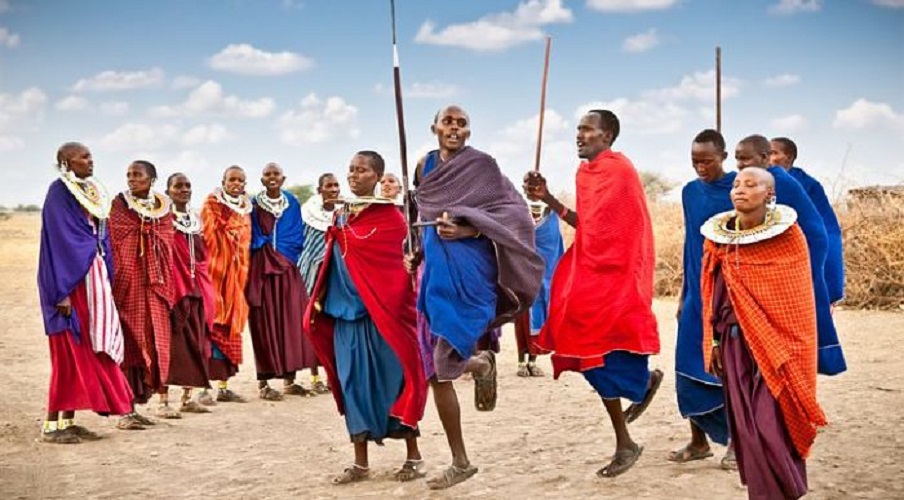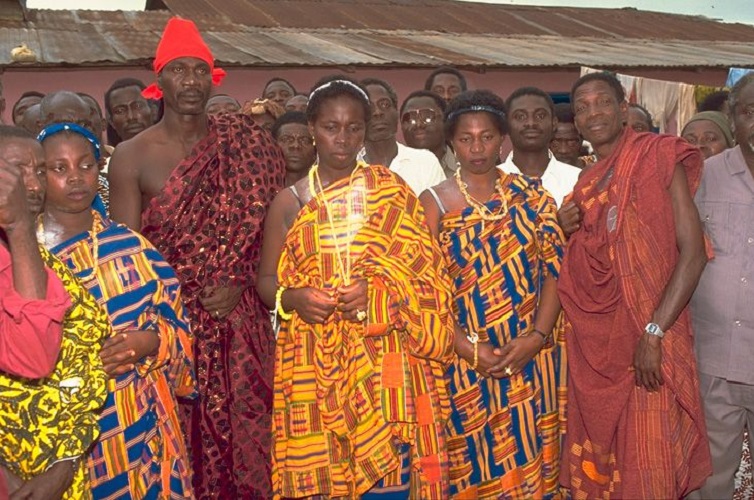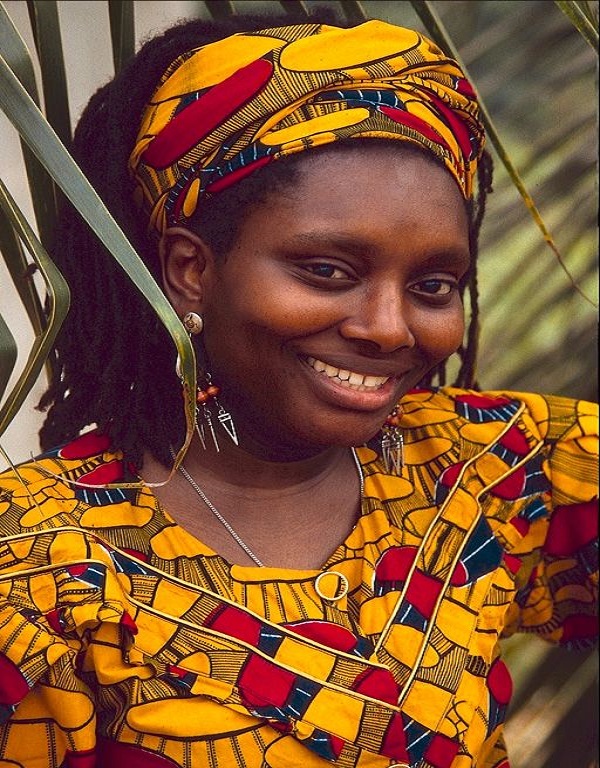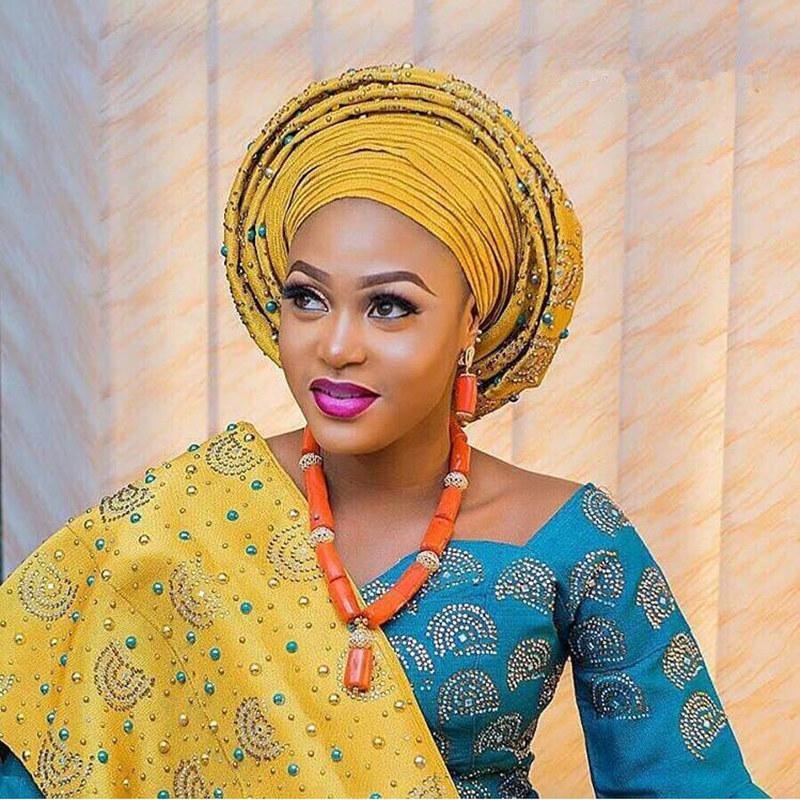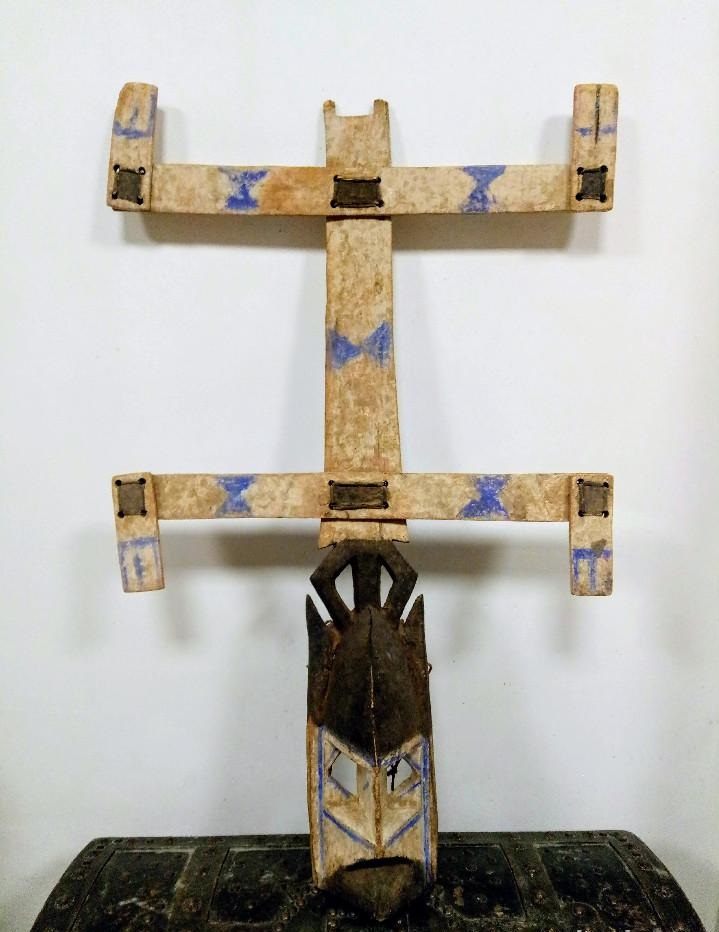The African continent is the place where humanity arose, the first tribes of our common ancestors were established there, that is why you will be interested in everything related to the typical costumes and dress of africa for children and adults, as well as other things.

dress of africa
As in each one of the continents, the clothing of Africa sustains different changes according to the regions, but especially according to the region of the continent that is spoken of. The traditional African dresses that can be found in places bordering the Mediterranean must differ from the costumes of the Horn of Africa or all of sub-Saharan Africa.
History of African dress
The typical African clothing of each territory is notoriously affected by the climatic conditions that they had to deal with, especially with the burning sun of the equatorial and desert areas.
Since the current organization of the countries does not correspond to the cultures or the historical nationalities of each tribe – but is the result of the European colonial period – in the same current country several different ethnic groups can be located, which, consequently, have different costumes. typical that identify each of them.
The traditional costume of Morocco or Algeria has components of Arab influence due to its proximity to this region, and the fact of sharing religion. Although in Morocco, the most indigenous clothing is that of the nomadic Berber tribe, closely linked to its desert environment.
In the sub-Saharan areas, the typical clothing maintains its triviality in places where it has gained some relevance and is the base of the population. In others, this origin is combined with the conditioning of religion.
The appearance becomes simpler in terms of the variety of materials and fabrics as one travels to South or East Africa, but in most cases those traditional African costumes, which also have a protective function, depending on the region.
They are dyed in color, some identifying themselves as the blue of the Berbers or the red of the Masai, and in other cases the ancestral designs of each land appear. It is also very common for African clothing to be complemented with headdresses and different types of pearls, metal or natural materials such as wood.
There are many people, especially young students, who ask us for information about the "typical costume" or "national costume" of a certain African country. Therefore, we believe it is necessary to present the criteria that have been followed in this section dedicated to clothing in Africa.
We understand that neither in Africa nor in any other continent is there a single "traditional or national dress". All African countries, and most countries in the world, are made up of different nations or ethnic groups with their own customs and often different forms and styles of dress.
On the other hand, the dress has always been subject to changes in fashion, although it has changed, sometimes very slowly. In the same ethnic group, or even in the same town and at the same time, not everyone dresses the same way. Although there are similar characteristics at all times and in all places, personal contribution has always counted.
Therefore, in the countries where a photograph was placed, others may have been totally different from other peoples and times.
Evolution of African dress
Today we live accustomed to the persistent changes in fashion in clothing, to the alternation of opposite forms that marks the fashion industry.
Fashion makes the dress, sometimes to adorn the body by hiding it and other times to show the body with a minimum of fabric that highlights it.
But the most recent, in many Northern countries, is the freedom of each one to choose the style of dress that they want to choose. But it is a recent phenomenon.
When Europe tried to control much of the world, the Europeans followed much more rigid canons, and the basic rule was that the body had to be hidden, so that the clothes would only show the face and hands. and sometimes not even that. It was considered immoral to show arms, legs, or any other part of the body, even on beaches.
In this way of thinking, Europeans arrived in Africa and found, south of the Sahara, that the societies that lived there had clothing habits diametrically opposed to theirs.
Given the strong social custom of hiding the body, they found towns that not only proudly displayed the body, but also used all kinds of adornments to make it.
But they were not surprised to discover that there were other cultures in the world from which to meet and learn new things, rather they were surprised that not everyone respected their uniform morality and tried to impose their norms and customs.
Continually insisting on changing dress habits, Europeans brought their own fashions or created new ones (short-sleeved shirts, shorts, safari jackets, etc.), becoming the dress styles in European cities. , like the most Europeanized elites in West Africa, while in North Africa, they imposed or maintained the style of the Islamized countries of the North.
But certain indigenous fashions are also maintained, such as the bubú of Western countries, or the Yoruba style, the burnus of Morocco, the Sudanese djellaba or the kanzu and kofia of the Swahili territories.
In general, during the 1930s, three main areas can be considered from the point of view of clothing. In southern and eastern Africa, the European style, as prestige clothing, began to replace the hitherto widespread imitations of military uniforms.
Part of coastal Tanzania, the dress of Africa extends inland to Malawi and Zambia, and from Nairobi to Kenya, Uganda, Rwanda, and Burundi. At that time, the styles were very different in South Africa, especially in Angola and Mozambique.
Shorts and short-sleeved shirts or Saharans are becoming common work clothes in the cities, while in rural areas European clothes or a combination of these and attire continue to be maintained. Gradually, women's clothing was replaced by clothing worn on missions.
European dress is so widely accepted that, for example in Namibia, a XNUMXth century Central European style eventually becomes a kind of ethnic African dress among the Nama and Herero. African men's fashion has not preserved military tastes as an expression of ethnicity, except among the Zulu and Nguni.
Another novelty are the wide white or red dresses of the pastors of African churches, surely, taking as an example the images printed in the Bible. In parts of East Africa, particularly Kenya and southern Sudan, traditional body art and a lack or scarcity of men's clothing survive to this day.
Indeed, as new means of ornamentation became available, more spectacular variations of body art were produced in Kenya.
In those years, on the coasts of the West and the equatorial zone, European models of women's dresses were not accepted, conserving the fabric, whether local or imported, its prestige. The decorative patterns of the fabrics must be adapted to local tastes and the fabric mills of Europe respond to the preferences of their African customers.
The models are launched in the big cities by courtesans (often dressed by importers) and by women from the African elite. Men's formal wear on the West Coast of Africa has remained immune to the influence of European clothing, but clothing in European cities is adopted by executives, university students, and white collar employees.
At the same time, the clothing of equatorial Africa becomes the dress of high society, but much less so in the democratic republic. From the Congo than from the French colonies. However, the bubo has retained its place in the Sahel and has even spread south. In fact, European fashions have penetrated much less here than in East and Southern Africa.
In the north of the continent, in general, their own styles and body adornments (henna painting) are preserved. Women adopt European clothing in the big cities, but they wore it under the haik, or like in Morocco, where European clothing was worn under a burner or even under a djellaba and with slippers.
Men, on the other hand, adopted European work dresses, and in Egypt, European clothing has long been the standard dress of the social classes. At that time, in the 1930s, in Egypt, the traditional tarbush was called into question.
Shortly after 1935, this type of hat was denounced by those who considered themselves more progressive, who saw it as a sign of subservience. Alongside this position, the playwright Tawfiq al-Hakim leads a countermovement that strongly defends the tarbush. Today, however, he is gone, wearing only a few conservative businessmen.
After the end of World War II, starting in 1945, nationalism used African dress as another manifestation of its ideas. Interestingly, different African nationalisms criticized nudity and skin adornment even more than European ones.
They criticize national customs, often very consciously as in Sierra Leone, but at the same time they created fashions or forms that they transformed into a kind of national dress. Nkrumah defined the style of national dress in 1957 and was followed by West African elites.
Yoruba party clothes, Kano or Bamako fools have become expressions of nationalism. Thus, some traditional forms of clothing styles, hairstyles, and body adornments found new life, especially when the new elites became wealthy enough to use clothing as an indicator of their social status.
European hairstyles and beauty products adopted by women were abhorrent in the eyes of nationalists. In the Democratic Republic of the Congo, Mobutu imposed the abacus through a decree prohibiting the European suit and especially the tie. The abacus was an expression of authenticity, a symbol of equality, virility, simplicity.
It was originally inspired by Maoist clothing. However, over time, as class differentiation asserted itself in Kinshasa since the 1970s, the abacus once again expressed, through the quality of weaving and cutting, a sign of social status.
Textile fashion returned to equatorial and central Africa, but with more elaborate styles and patterns than in other times. However, in eastern and southern Africa, upper-class women opposed their reappearance in the city. European fashion has developed much more in Nairobi than in Dakar.
In general, nationalism is expressed less through clothing than by other means. In North Africa, the most notable development has been the attempt to re-veil women in the cities of Egypt as a sign of religious practice. In Libya and Tunisia, they witnessed the revival of a national costume derived from the ancient dresses of rural shaykhs.
On the other hand, a production of "typical" clothing was born for the foreign market. Flower men's shirts, embroidered bubos, bags, etc. they are beginning to be used, first by expatriates and later, spread among African Americans and their supporters in the United States.
Companies are created to produce indigenous dresses but for export in Côte d'Ivoire (Sénoufo), while in Lesotho they have begun to produce fabrics for the tourist market, in Botswana printed fabrics and tapestries in Mali.
body ornaments
Traditional Africa has known a wide variety of styles of personal ornamentation, either through the method of transforming physical appearance (scarification, tattoos, body painting, hairstyle,...), or through clothing and jewelry (for example, the djellaba in the northern countries, the large Masai necklaces, the turban, …).
These styles were used to express differences of sex, age, marital status, religion, ethnicity, social position or a certain circumstance (work, party, mourning, ...).
These styles have always been subject to fashion changes. So, during the first half of the XNUMXth century in Rwanda, the hairstyle that was all the rage among upper-class men was a high crown of hair that let curls fall to the sides. In the late XNUMXth century, it was compulsory for Kuba youth to wear top hats.
Today, while among young people in many Northern countries, physical modifications of the body (piercings, tattoos, earrings, …) are the latest fashion and symbols of innovation, it may seem strange that in colonial times, such adornments, including painting body and nudity, were considered barbaric and signs of lack of courtesy.
This way of thinking, and the continuous campaigns of adoption of European forms and dresses, altered many of the existing fashions and customs in Africa, and caused that the habits in this regard were little studied or collected. Below are some examples of body adornments currently used in some African societies.
Characteristics of African clothing
The most used fiber in the manufacture of clothing is cotton, in this way the old dyeing techniques are still used with a wide range of colors and the traditional wooden looms with reels, obtaining results like those of any modern textile factory.
Likewise, the printing press contains a communicative value and a social function, which marks important moments in people's lives or determines belonging to a group or ethnic group.
In the culture of Africa, we can see how the Hausa artisans of Nigeria, obtain geometric designs by varying the color of the threads, on the other hand, the Sénoufo of Côte d'Ivoire, weave bands six inches wide, sew them together, then They paint with natural dyes.
Likewise, in Mali the trichrome of white, black and red is used, or in Ghana blue, yellow, red and green are used, while in the rest of the African countries of the West, they tend to use colors such as ivory, vanilla , earth, ocher, gold and black.
A tradition of many African tribes is personal adornment, which ranges from altering one's physical appearance with costume jewelry to tattoos or body paint.
Typical clothes of African dress
Within this culture, certain characteristic outfits of African clothing stand out, among which:
khanga: It is a rectangular piece of fabric in bright colors, with a central design and another around it.
Kiteng: fabric made with a technique called batik, which women wrap around the chest, waist or head as a turban, in the same way that it is used as a material for making dresses.
dashiki: a very popular attire among men, consisting of a long top reaching to the upper thigh, decorated with a variety of patterns around the neck, often worn with the typical brimless hat or kufi.
Grand Boubou: Being a typical costume for North African men, it is essentially a set consisting of a tunic, pants and hat.
Aso-Oke: Another very colorful female outfit, which includes a blouse, wrap skirt, scarf and shawl, in the same way there are sets for men.
Despite the great variety of patterns typical of each region, African clothing has common elements such as color, brightness and originality.
Masks African Nature and function of a traditional art
As an important part of the culture, African masks are generally reserved for religious ceremonies of gratitude to the gods. In this way, the person who uses them can be the ancestral spirits, the heroes of legends, the souls of animals, or a combination of them that develops a connection with the spirit world.
The nature of African masks
Although the main function of African worms is to transform their bearers into powerful people, to give life to a creature of a different species, they are used in religious and social ceremonies such as agriculture, funeral rites, initiation into adulthood or to honor the woman. Thus, they combine human and animal characteristics, as a way of celebrating the union between man and his environment.
Undoubtedly, the preferred material for the manufacture of these masks is wood, based on the belief that trees have a soul, but other elements such as copper, bronze, ivory or terracotta are also used in the same way, and they are also painted. with natural dyes from insects, earth or blood, and decorated with shells, skins, bones, leaves or plants. They also have a wide variety of sizes and styles depending on the function they perform.
Types of African masks
Within the culture of this continent there are different types of masks that vary with each tribe, let's see some of them.
Kanaga from Mali:Used during the Dogon ceremony to honor the creation of the world or in the funerary rites of the Awá ethnic group, this mask represents an African bird of the same name, in this way the face has a triangular shape, a cone in the lower part of the mouth, and a crown symbolizing the outstretched wings of the bird.
Fang from Cameroon, Gabon and Equatorial Guinea:With accentuated elongated features and indentations extending from the eyes to the cheeks, this mask is used for the forensic functions of protecting the peace and combating evil energies. Likewise, it was a source of inspiration for the painter Picasso, in his work Les Jeunes Dames d'Avignon.
Other prominent masks include: Dan, Senufo, We, Baule, Kulango from Côte d'Ivoire, as well as Sowie from Sierra Leone and Nigeria, Akuaba from Ghana, Andoni from Niger, Bindji from Zaire, Bamileke from Cameroon, Salampasu from Congo, and Pende d'Angola.
In short, the African masks, in addition to their religious, social functions such as: welcoming the newborn, transforming him into an adult, granting him wisdom and accompanying him in death.

